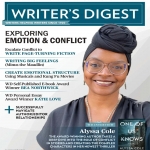Capturing Conflict in Your Content

“Every great story depends on conflict to propel it forward, Jane Cleland writes in Writer’s Digest. The conflict can be one of four types:
- actual or threatened physical attack
- emotional
- spiritual (loss of faith or shaken beliefs)
- mental (a puzzle or intellectual challenge)
However, Cleland cautions, “if someone doesn’t care about a situation, you don’t have a conflict.” That means, she says, “We need to understand what makes people care“.
When it comes to content marketing, “conflict is a problem that the customer is motivated enough to resolve,” Truss Creative adds. In brand marketing, though, it’s not about the business owner’s origin story or their “disruption story”, but about the customer’s story. Writing effective content, therefore, means identifying the customer’s:
- everyday annoyance
- burning desire
- quiet wish
- tower foe
- existential threat
In other words, what does your audience notice, value, want to protect, and want to project to others?
Years ago, my friend and admired sales training expert Tim Roberts told me that, while salespeople try to develop good problem solving skills, he challenges them to first find, then solve. Finding a problem that the prospect hadn’t considered is what makes a salesperson valuable.
In blog posts, we teach at Say It For You, the opening paragraph is there to make clear not only what need, issue, or problem is to be discussed, but also what “slant” the business or practice owner has on the issue. Then, it’s crucial not to end in a “fizzle”, leaving web visitors trailing off in a disappointed move. The ending has to resolve the central conflict, issue, or problem you’ve raised, leaving readers with a path to action and positive expectations.
Capturing conflict in your content might be the secret to success.

Leave a Reply
Want to join the discussion?Feel free to contribute!